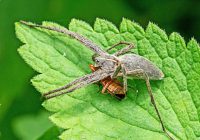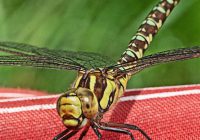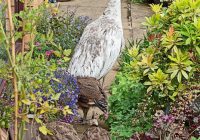Dr Phil Smith’s Wildlife Notes
June 2020
“Surely June can’t be as dry as this” I wrote at the end of the May notes. Fortunately it wasn’t. Thanks to a shift in the North Atlantic Jet Stream, measureable rain fell on about 18 days, mostly in small to moderate amounts. The online weather radar showed we missed some torrential thundery downpours by just a few miles.
The desperately needed rain had a dramatic effect on our coastal vegetation, most obviously seen on road verges which started off straw-coloured, gradually greening up as the month progressed. Even so, the botanically rich verges at Kenilworth Road, Ainsdale and Thornbeck Avenue, Hightown seemed to have lost many of their choice flowers. I looked for the rare Clustered Clover at Hightown, finding only a small surviving patch in the shade of a tree.
The rain came just in time for our duneland orchids. Bee Orchids were certainly down in numbers but I counted 35 of these beauties in the Devil’s Hole at Ravenmeols. Early Marsh-orchids appeared in much healthier numbers at the Newest Green Beach, north of Ainsdale. A wonderful display of over 1000 flower-spikes included mostly the brick-red coastal form coccinea. A slack in the nearby frontal dunes also had some impressively large Southern Marsh-orchids. Ours are invariably a darker colour than descriptions allow. As Patricia Lockwood would say “They haven’t read the books.” I also counted the Early Marsh-orchids at Haskayne Nature Reserve, a few miles inland. There were 109, compared with only 60 last year but, due to the earlier drought, total numbers of marsh-orchids there were well down. From mid-June, shocking pink Pyramidal Orchids appeared widely in the fixed-dunes, being far more numerous now than a few decades ago.
The dune water-table held up well, dropping only 6 cm during the month. This gave the Natterjack Toad tadpoles in the Devil’s Hole slacks sufficient time to complete their development, hundreds of toadlets being counted by mid-month; the first successful breeding here for several years. Mind you, how many of the baby toads survived the trampling feet of thoughtless visitors is another matter. I managed to save the last of the Natterjack tadpoles from being carried off by a family equipped with nets and plastic containers. They had walked past a sign about the toads, which are protected by law, but hadn’t bothered to read it.
The damp conditions interspersed by sunny intervals suited some of our duneland insects, though others seem to have been hit by the spring drought. Thus, I saw very few colourful day-flying Narrow-bordered Five-spot Burnet moths. Some of the grass-feeding butterflies, such as Meadow Brown, Small Heath, Small Skipper and Ringlet were also thin on the ground, though I did spot four of the latter at their favoured Ravenmeols grassland on 20th. A bramble patch there had a superb Dark Green Fritillary and, surprisingly, a female Banded Demoiselle over a km from its Downholland Brook breeding habitat. A sheltered corner at Range Lane produced a smart Red-legged Robberfly, new to the Sefton Coast. Coincidentally, Pete Kinsella found one the same day in a Hightown glade. Visiting the glade later in the month, insects I hadn’t seen before included metallic green Swollen-thighed Beetlesand both male and female Violet Black-legged Robberflies. Pete won the prize, however, by photographing another of our targets – the first Striped Slender Robberfly for the Sefton Coast at Ainsdale National Nature Reserve. This is a southern insect that has recently colonised the region.
A pulse of hot air from the continent on 24-25th produced a mini heat-wave and also an immigration of Red-veined Darters. Trevor and I found two at the Hightown Natterjack scrapes and others were reported at Ainsdale Local Nature Reserve. However, the main influx was at Crosby on 26th where Pete counted an unprecedented 28 bright-red males. That day, I was attending an outdoor (socially distanced) meeting of the Altcar Conservation Advisory Group. We saw the excellent progress made on removing clumps of invasive Sea Buckthorn and Japanese Rose, visited two new Natterjack scrapes, noted the first Great Crested Newt for Altcar and spotted a distant Roe Deer. I also found a massive colony of Cavernous Crystalwort, only the second time I had seen this nationally scarce liverwort.
A few days earlier, a walk with Trevor north from Sands Lake, Ainsdale, characterised the Sefton Coast in June. Passing by rare hoverflies on umbellifer flowers, an exotic goldfish about 18 inches long vied for attention with a pair of Mute Swans and their five cygnets. Studded with Pyramidal Orchids, the open dunes produced the first Small Skippers and Small Heath butterflies of the season, while two Dark Green Fritillaries dashed past. Golden mounds of Kidney Vetch hummed with bumblebees. The familiar orange-and-black caterpillars of the Cinnabar moth were busily chewing up Ragwort plants. Cruising dragonflies on the scrapes included the majestic blue Emperor, our largest species. All this and more, amongst a backdrop of singing Skylarks and the distant calls of Sandwich Terns on the shore; unbeatable!






